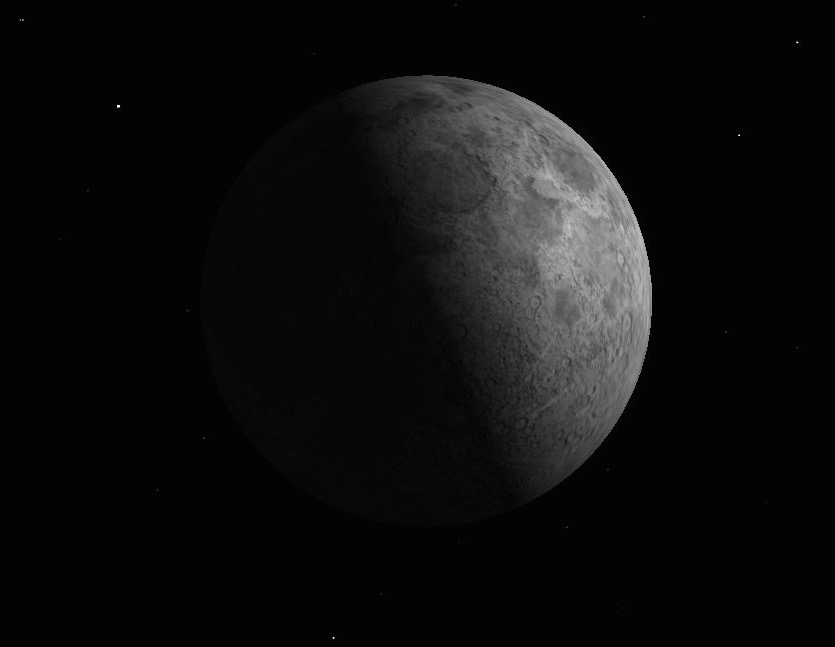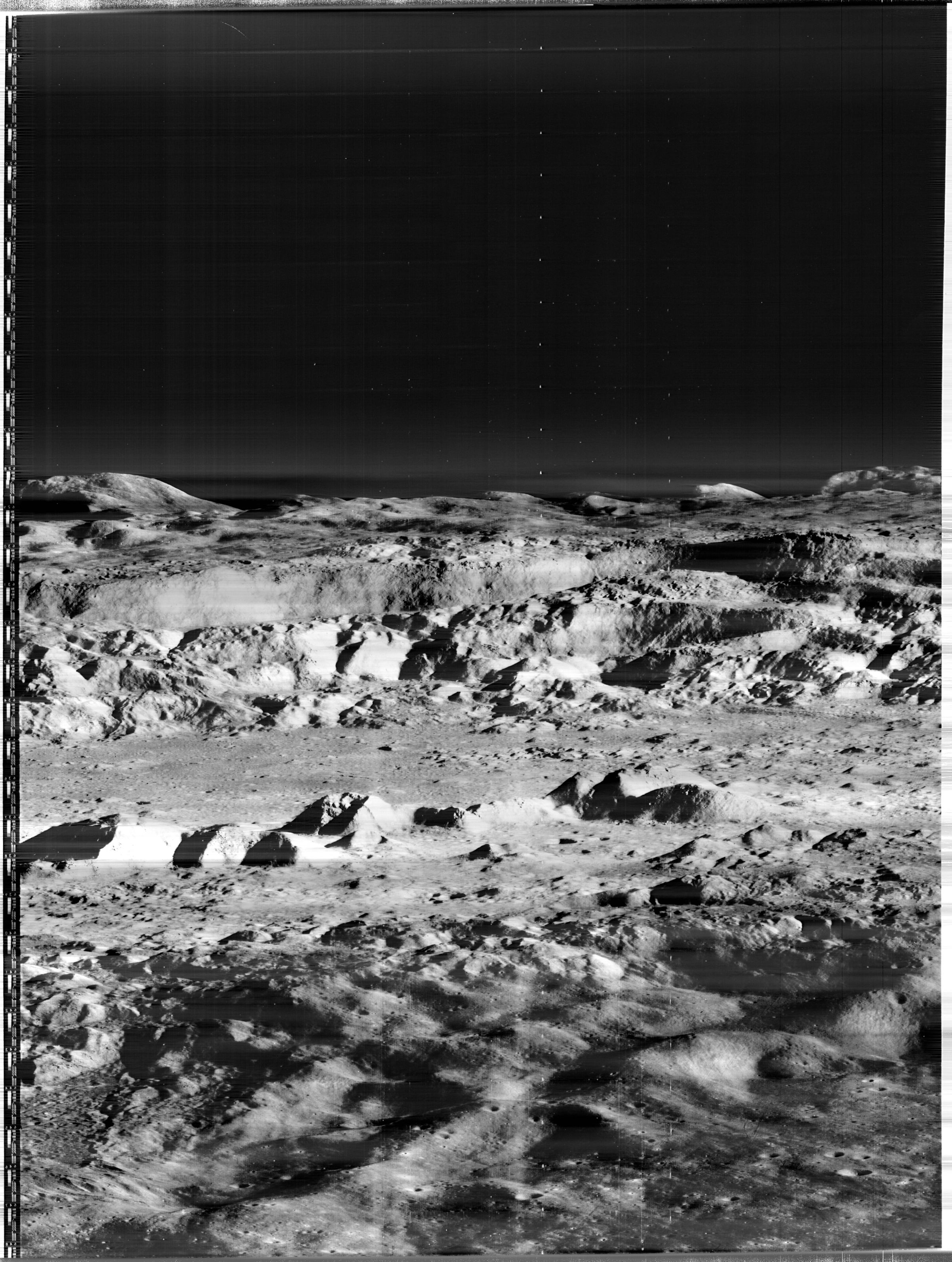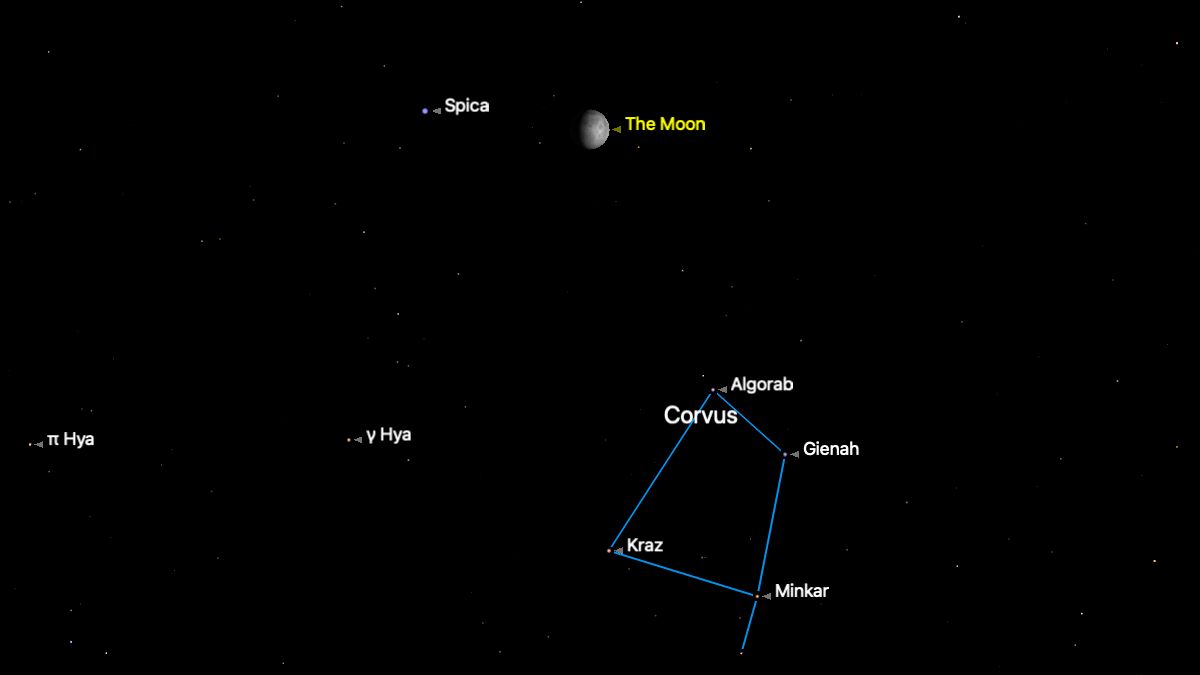
As the moon climbs the western sky this week, watch it with binoculars.
Earth's natural satellite shows at least as much detail through binoculars as Galileo Galilei saw with his crude telescope 400 years ago. The mountains, hills and plains that Galileo discovered in 1610 established for the very first time that the moon is a world of its own, completely shattering the long-held notion that it was a perfect crystal sphere.
Your first glance through binoculars will reveal large dark areas, the so-called seas or maria (the plural of mare), which in reality are flat lava plains. [The Moon: 10 Surprising Facts]
When I was a young boy growing up in the Bronx, the one item in the celestial scene that attracted my immediate attention looking skyward was that ever-changing moon, with its varying phases, locations, times of rising and setting, and other more subtle aspects of its visibility. Now, nearly half a century later, I still find these things fun to observe.
The light/dark boundary on the moon, called the terminator, is the best place to look for interesting lunar features, because mountains cast the longest shadows in the rising/slanting sunlight.
Monarch of the moon
Look along the terminator tonight (June 25) for a magnificent crater called Copernicus, named after the famed 16th-century Polish astronomer and theologian Nicolaus Copernicus. This crater, which is about 58 miles (93 kilometers) wide and 2.3 miles (3.7 km) deep, was nicknamed "Monarch of the Moon" by lunar cartographer Thomas Gwyn Elger.
When Copernicus appears, as it will on Thursday aligned with the terminator, it becomes the most obvious of any lunar feature.
Get the Space.com Newsletter
Breaking space news, the latest updates on rocket launches, skywatching events and more!
At sunrise, and again two weeks later at sunset, Copernicus forms a vast lake of black shadow. Those long shadows led early observers to believe that many lunar mountains are extremely precipitous. But they are not so spectacular if one actually works out the geometry of the projections.
The moon's radius is only about one-quarter that of Earth, so the lunar horizon falls away faster. An astronaut standing in the center of Copernicus, for example, would not be able to see its 12,600-foot –high (3,840 meters) walls just 29 miles (47 km) away.
In the nights that follow Thursday, you’ll be able to observe the crater in full sunlight surrounded on all sides by a system of bright rays extending out for nearly 500 miles (800 km), resembling a nebulous pattern with plumy markings.
Copernicus is a classic example of a well-preserved, relatively young (less than 1 billion years old) lunar impact crater. Most likely due to its recent formation, the crater floor has not been flooded by lava. The terrain along the bottom is hilly in the southern half while the northern half is relatively smooth. Peaked mountains rise from the center of the crater to a height of 2,600 feet (793 m); they probably were formed as a result of a rebound of deep-seated rocks at the site of impact, scientists say.

Photograph of the century
On Nov. 24, 1966, NASA's Lunar Orbiter 2 spacecraft was in the process of taking photographs of the moon's surface in order to determine possible landing sites for the upcoming Apollo missions.
Most of the probe's photographs were taken of the lunar landscape with the camera pointing straight down, but on that particular date, with the spacecraft approaching Copernicus, the camera was pointing at a rather oblique angle. The result was a stunningly detailed image termed by NASA scientist Martin Swetnick, and subsequently quoted by Time magazine, as "one of the great pictures of the century.”
That's something to think about as you gaze at this famous crater through binoculars or perhaps a small telescope tonight.
Joe Rao serves as an instructor and guest lecturer at New York's Hayden Planetarium. He writes about astronomy for Natural History magazine, the Farmer's Almanac and other publications, and he is also an on-camera meteorologist for News 12 Westchester, N.Y. Follow us @Spacedotcom, Facebook or Google+. Originally published on Space.com.
Join our Space Forums to keep talking space on the latest missions, night sky and more! And if you have a news tip, correction or comment, let us know at: community@space.com.

Joe Rao is Space.com's skywatching columnist, as well as a veteran meteorologist and eclipse chaser who also serves as an instructor and guest lecturer at New York's Hayden Planetarium. He writes about astronomy for Natural History magazine, Sky & Telescope and other publications. Joe is an 8-time Emmy-nominated meteorologist who served the Putnam Valley region of New York for over 21 years. You can find him on Twitter and YouTube tracking lunar and solar eclipses, meteor showers and more. To find out Joe's latest project, visit him on Twitter.
